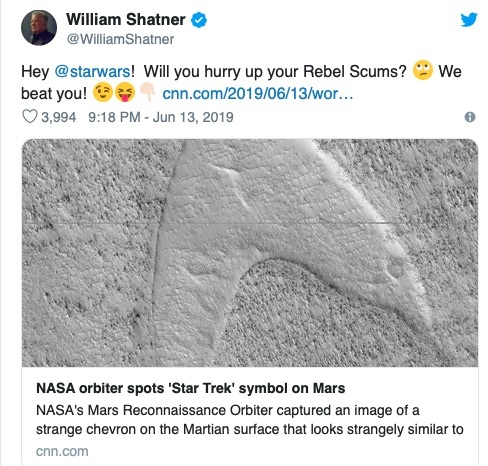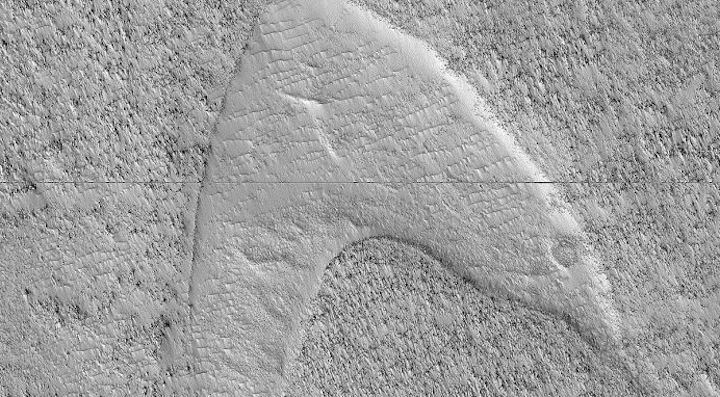It looks like Starfleet is literally embedded on the planet next door: A dune in the shape of the famous logo from "Star Trek" appears prominently in a new picture from the Mars Reconnaissance Orbiter (MRO). Even Captain Kirk himself (actor William Shatner) has weighed in.
Don't expect to find Spock, Jean-Luc Picard or Michael Burnham squatting nearby, however. Just like the famous "face on Mars," this Starfleet logo was produced by random chance, as wind, lava and other forces sculpted the Martian landscape.
"Enterprising viewers will make the discovery that these features look conspicuously like a famous logo," the University of Arizona, which manages the MRO HiRISE (High Resolution Imaging Science Experiment) camera, said in a statement. "You'd be right, but it's only a coincidence."
The dune feature is located in Hellas Planitia, a large plain within the Hellas impact basin in the southern hemisphere of Mars. An interaction of dunes, lava and wind formed the chevron shape visible in the picture, according to the statement. MRO has photographed many other chevrons on Mars, so we're guessing this is not the first time it spotted one shaped like a "Star Trek" logo.
Scientists working with the HiRISE instrument have spent years studying the features they see in Mars images, and they think they have a good sense of how this particular shape came to be. The story starts with crescent-shaped sand dunes where wind and surface interacted.

Then came lava. Eruptions spilled the molten substance across the area surrounding the dunes, but it wasn't thick enough to cover them entirely. And when the lava cooled, the sand dunes remained, "stuck up like islands," according to the statement.
"However, they were still just dunes, and the wind continued to blow," the statement continued. "Eventually, the sand piles that were the dunes migrated away, leaving these 'footprints' in the lava plain. These are also called 'dune casts' and record the presence of dunes that were surrounded by lava."
While the "Star Trek" feature is a coincidence, we can truly say that MRO has "lived long and prospered" (as the Trekkie saying goes) at the Red Planet. The orbiter has been sending back high-resolution imagery for 13 years, well past its design lifetime. It serves as a vital communications relay for NASA's Curiosity rover and InSight lander and is expected to support the Mars 2020 rover mission when that craft lands on the Red Planet.
Quelle: SC

